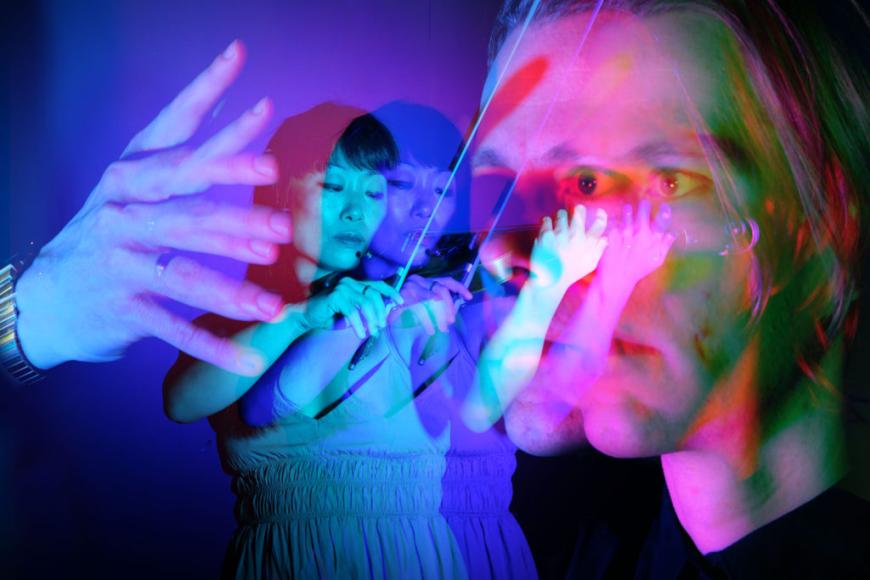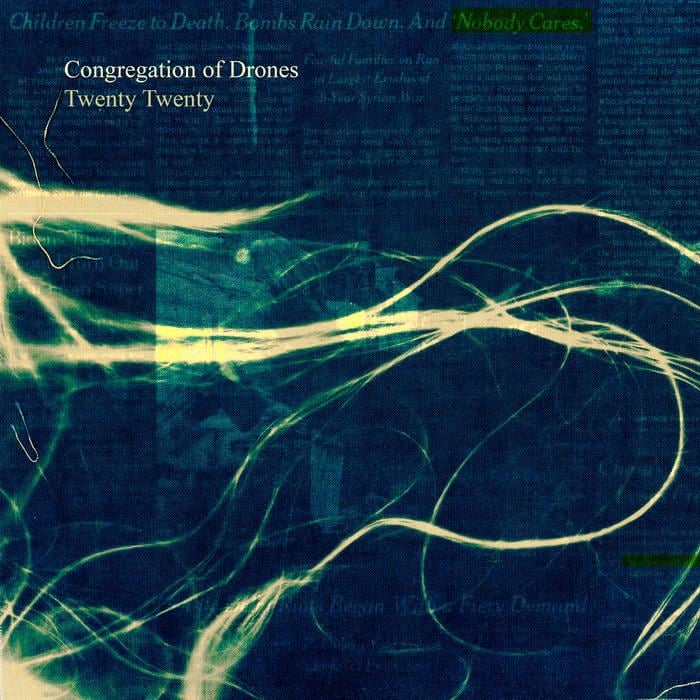
Body horror, translated into sound, closes the second track of Twenty Twenty, the debut album from duo Congregation of Drones. Violinist Pauline Kim Harris writhes as the processing of electronic musician Jesse Stiles seems to disintegrate her string sound into a wall of grinding sediment. It’s shocking, after listening to the long stretches of violin riding the leading edge of the music, to hear Stiles’s processing and synths rippling out behind Harris like a wake. Think cinematic downfall, the lowest defeat in this hero’s journey.

This is a dark album, hovering around a central minor chord that only makes a full appearance occasionally, and those are moments of clear emotion in what is often an overwhelming sensory experience. Though each of the four tracks here were recorded live, there is an overarching structure that depends on Harris and Stiles pushing each other away and coming back together again, as well as pushing each other between tonal and textural playing. Strobing flashes in the synthesizer breed muted plucks and taps from the violin, and sawing groans from the strings emerge like an animal call amid a jungle of bright bleeps and scurries.
Both Harris and Stiles boast impressive histories of collaboration — Harris with David Byrne, Björk, Lenny Kravitz, and Max Richter and Stiles with Pauline Oliveros, Meredith Monk, David Behrman, and Morton Subotnick. It’s remarkable, if not unexpected, that the duo should be able to produce such a strongly unified project after only playing together for a year preceding the recording.
Twenty Twenty does not escape some of the tropes of live-processed music — long evolving tones and textures, reverb for miles, dramatic contour via accumulation. Seasoned listeners might want to hear artists push out of these well-dug furrows, but it’s still delightful to be overtaken by the expectedly epic landscape Congregation of Drones lays before you. When I say “epic,” I mean a kind of otherworldly elegance that persists through extremes of emotion or timbre. Cavernous synths that envelop ribbons of violin sound suggest an uninhabited place, somewhat outside the grip of earthly physics and definitely outside the realm of human society. There is nothing quotidian about this music.
The titles, however, tell a story completely removed from the Dune-like scenes you might imagine and are very much rooted in reality. Each one — “Gesture of Devotion,” “See What Happens,” “Experimental Treatment,” and “No Spinning” — was taken from a headline in The New York Times on the day the track was recorded. The first two were captured live and in person on Feb. 27, 2020, the second two on Oct. 3 of the same year but live over the internet due to the pandemic lockdown. Harris and Stiles directly tie their performances to these dates and to events in the broader world, which is hard to square as a listener. There are otherwise no clear references in the music to what was happing in early 2020 or eight months into the pandemic.
Not that there have to be. Even if the duo did not set out to make an album that reflected the dire state of the world, these foreboding, fracturing, and solemn sounds could easily have stemmed from simply trying to live during that awful year. And while there’s a disconnect between the cold reality of the titles and the high-fantasy world of the music, perhaps seeing the full, epic proportions of the catastrophe we’re still living in today is one way to make sense of it all.



